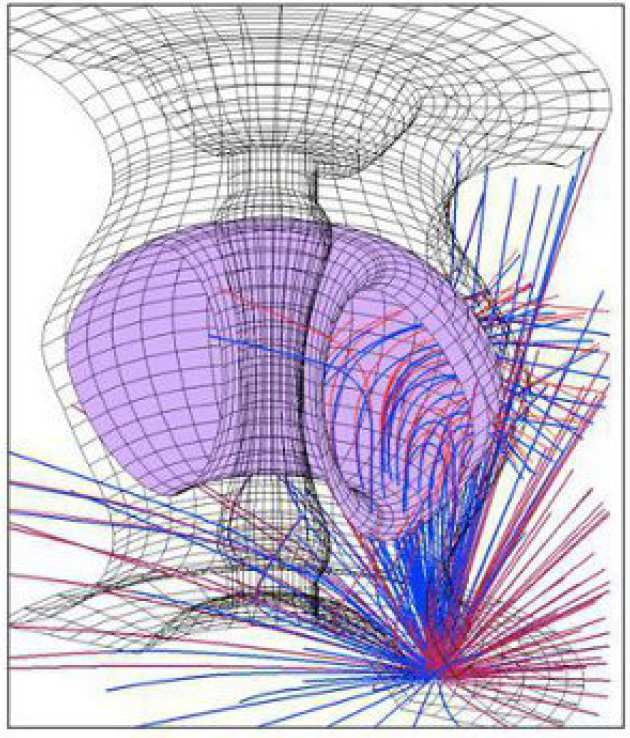M. Coppins, N. Rizopoulou, M. Bacharis, D. Thomas, R. Cameron, J. Gibson, J. Holgate, L. Simons, L. James and J. E. Allen.
Many plasmas contain dust (small, usually solid particles), but although dusty plasmas occur widely, the detailed study of their properties is a fairly new area of plasma science. Dusty plasmas are found in space, in industry, in fusion, and also in special laboratory experiments to explore the unexpected, and often beautiful, collective phenomena which occur when large numbers of micron-sized monodisperse spheres are immersed in plasma. Such phenomena, of which dust crystals are the most familiar, form a large part of the dusty plasma literature.
Current Research
 At Imperial College we are interested in two other aspects of dusty plasmas, namely:
At Imperial College we are interested in two other aspects of dusty plasmas, namely:
At present our work is computational/ theoretical, but we plan to set up an experimental programme in the next few years.
Figure: a graphic representation of the trajectories of ions in the potential of the dust grain used for the calculation of the ion drag in the binary collision approach (see' the DTOKS code' in tokamak dust transport).
See also: